By Don Radebaugh — It’s the mother of all metroparks in northwest Ohio. While the area is well known for its beautiful parks and recreation, none can compare to Wildwood Preserve, and that’s because none has the heart and soul that Wildwood has…a bona fide heartbeat left behind by the family who called it home. A family that arguably did more for the citizens of Toledo and northwest Ohio than any other single family before, or after.
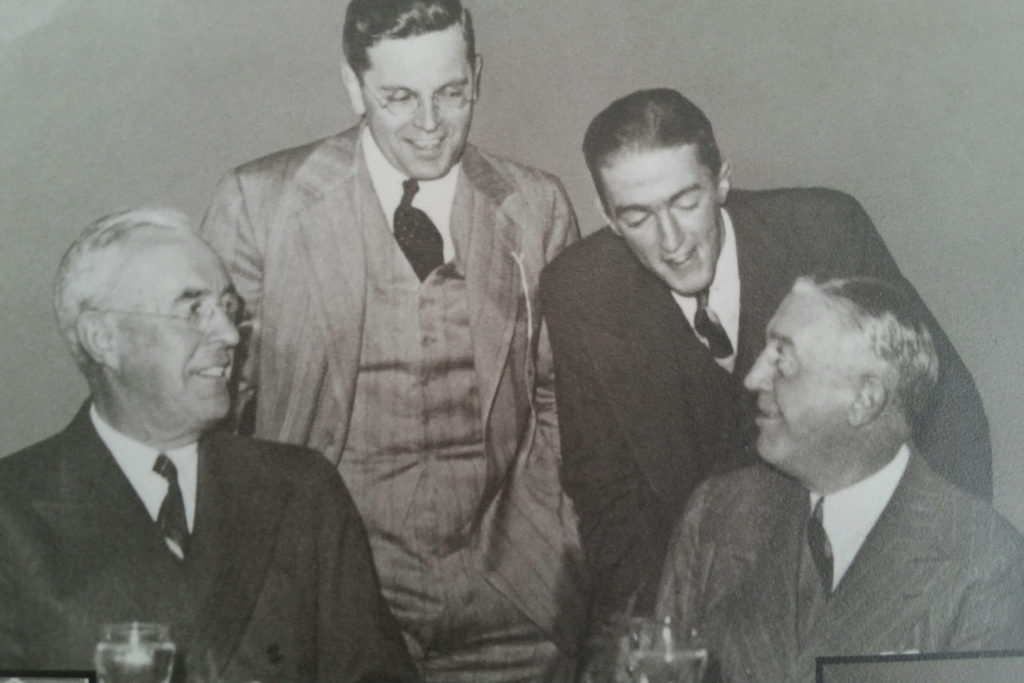
At the center of the 500-acre preserve stands the park’s showpiece, the 32,000 square foot Manor House (cover photo), constructed for R.A. and Page Stranahan during the Great Depression. The beautiful Georgian Colonial style home was built over a two-year span, from 1936 – 1938. For more than three decades, the Manor House served as the Stranahan Family’s refuge from the world around them. And like any home, each one comes with a story. And behind every story comes a back story. No exceptions here.
For the most part, this story starts in 1910 when R.A and his brother F.D. Stranahan left their Boston roots and steered for Toledo, Ohio. Neither the Stranahans nor Toledo would ever be the same. Both would benefit greatly from the other. Back to the beginning.
R.A. and F.D. Stranahan are essentially the founders of Champion Spark Plug Company…sort of. At the very least, they ended up with the patent on the Champion name which they legally and wisely used to eventually create the largest spark plug manufacturing company in the world. But it certainly didn’t start out that way. More than 20 thousand dollars in debt, and with a company that was fledgling along at best, the brothers had little choice but to move to Toledo when Willys-Overland Motor Company offered R.A. and F.D. a contract under which Champion would become the exclusive spark plug of automobiles manufactured at Willys-Overland. The deal came with the stipulation that the Stranahans must make Toledo their home, the same city Willys-Overland called home. About two years later, Ford Motor Company, under the direction of its founder Henry Ford, offered up a similar contract. In no time, R.A. and F.D. paid off their debt and eventually made a fortune beyond their wildest dreams.

But there’s more to the story, which is why we’re going to back up to 1905 when French track bicycle racer Albert Champion incorporated the Albert Champion Company in Boston to make porcelain spark plugs with his name on them. His partners were, you guessed it, R.A. and F.D. Stranahan. From here it gets a little fuzzy. Whether Champion was forced out or left on his own accord, Champion left the company while the Stranahan brothers retained ownership of the Champion patent/name. It wasn’t until 1922 that Albert Champion changed to AC Spark Plug Company, named after his initials (AC), after settling out of court with the Stranahans, his original partners in the Albert Champion Company. In other words, Champion could not legally use his own name going forward, which is why he opted for his initials while R.A. and F.D. marched off in the sunset with the Champion brand.
However the deal went down, Toledoans, without question, became the benefactors of Stranahans’ success at Champion, and to this day, folks from the area and across the country continue to reap the rewards of one of the prettiest parks on planet earth…one that almost never came to be. More to the story ahead.
After paying off their debt and with profits piling up, the Champion Spark Plug Company became wildly successful. It also didn’t hurt that by the time the Stranahans arrived in Toledo, the economy was soaring. In fact, the first half of the 20th century was an amazing time in American history. Through the “roaring 20s” the country produced incredible industrial growth, and as a result, the economy boomed, and certainly in northwest Ohio and southeast Michigan where Willys-Overland and Ford were pumping out cars by the thousands, equipped with Champion Spark Plugs. Over the next 50 years, the Stranahan’s great business success shaped the future of northwest Ohio and influenced developments across the globe.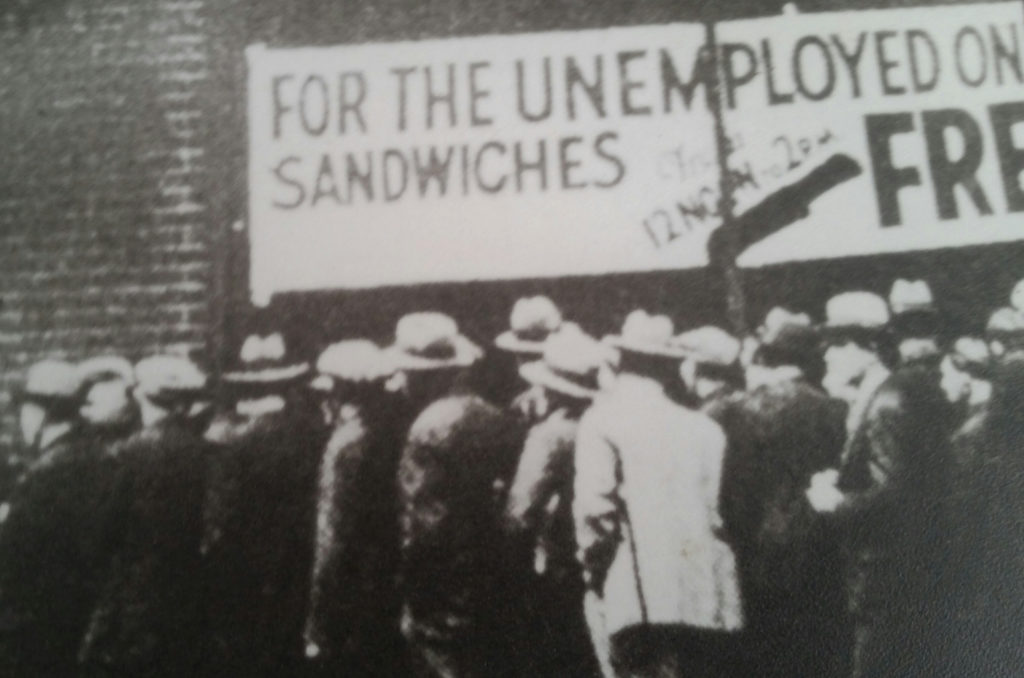
But as bright and promising as those times were in the early days of Champion in Toledo, it all came crashing down when a sell-off in the stock market in October of 1929 triggered the Great Depression. Especially hard hit was Toledo which relied on its industrial and manufacturing strength to fuel the local economy and feed local families. Overnight, Toledoans went from full-time work and full dinner plates to unemployment and bread lines.
The story of the Stranahans encapsulates these times and continues to shed light on how the country went from economic feast to famine; and finally emerged to lead the world in manufacturing and innovation through the remainder of the 20th century.
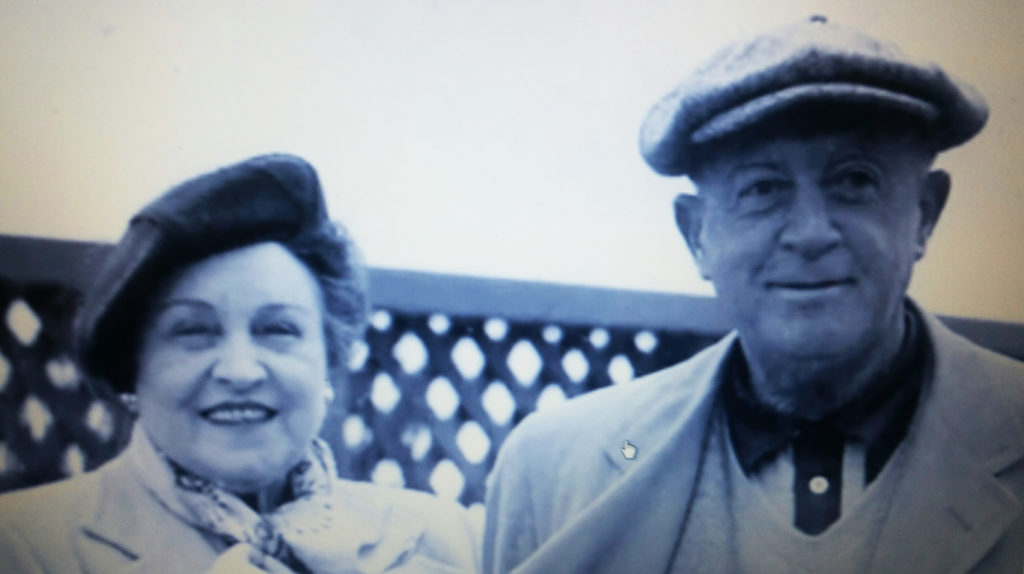
Fortunately, brothers R.A. and F.D. didn’t just bask in their wealth while their neighbors went hungry. They became great philanthropists, using their money and influence to help Toledo and the nation forge through the troubling times of the Great Depression and World War II.
In 1936, with the nation still in the middle of the Great Depression and so many Toledoans out of work, R.A. hired a local architectural firm to design the Manor House. Over the next two years, he employed as many as a hundred local craftsmen to build the house, which became the centerpiece of the estate the Stranahans named Stranleigh. The title included half the family’s last name and an old English suffix meaning meadow or clearing in a forest.
 During construction of the mansion, workers also diverted a section of the Ottawa River so it flowed through the backyard, creating an island behind the home. This was not only aesthetically pleasing, the waterway eventually provided a cool-air system in the home during hot summer days. The Stranahans had a tunnel built from the waterway that provided the path for the cool air to find its way to the home’s basement and eventually throughout the house.
During construction of the mansion, workers also diverted a section of the Ottawa River so it flowed through the backyard, creating an island behind the home. This was not only aesthetically pleasing, the waterway eventually provided a cool-air system in the home during hot summer days. The Stranahans had a tunnel built from the waterway that provided the path for the cool air to find its way to the home’s basement and eventually throughout the house.
During World War II, R.A. Stranahan also bussed in German prisoners of war daily, not to torture them — which was what was going on across the Atlantic to American prisoners of war — but to work in favor of the allied war effort. During this time, R.A. Stranahan sat on all seven successful war bond drives in the Toledo area.
Just west of the home stands the family’s horse stables, which quite fortunately have been preserved, adding yet more personality and charm to Wildwood. While visitors today walk, run and bike across the preserve, imagine covering the property by horseback, which the Stranahans so often did.
A little further to the west of the stables, a small clearing with a posted sign marks the very spot where the family Ballroom and riding arena once stood. The Stranahans used the site to host big parties for business clients and their elite social circle. One can only imagine the local industrialists and business tycoons who were entertained inside the ballroom, possibly members of the Ford family although, interestingly enough, there is no proof available (that we know of) that places Henry Ford, his son Edsel or anyone else from the famous Ford family at Stranleigh. That said, it would be hard to believe that no one from the Ford family ever visited the Stranahans at Stranleigh considering how connected the two families were over the decades. 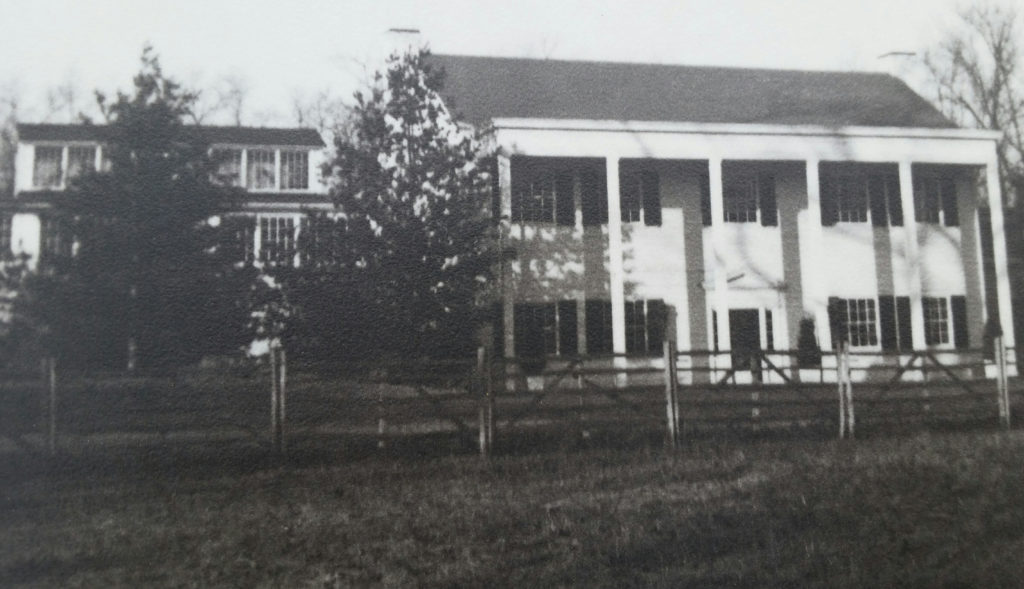 That’s still a mystery yet to be solved. At any rate, the ballroom included and orchestra stand, large fireplaces and built-in tables. The ballroom overlooked a riding arena where horse shows entertained the family’s guests.
That’s still a mystery yet to be solved. At any rate, the ballroom included and orchestra stand, large fireplaces and built-in tables. The ballroom overlooked a riding arena where horse shows entertained the family’s guests.
Headed back in the other direction, on the east side of the home are the formal gardens, visible from the second level windows, a great view from R.A. and Page Stranahan’s bedroom. The gardens were designed by famed landscape architect Ellen Biddle Shipman, who also designed gardens for the Rockefellers, Fords and other wealthy families across the United States. At one time, more than 600 of her gardens could be found across the American landscape; however, today only a handful remain in their original condition, and one of those surviving gardens quite fortunately lives at Wildwood. The beautiful gardens are now restored to their original luster, complete with lights that illuminate the gardens at night just as they did when the Stranahans were home.
 And talk about adding a touch of class. The metroparks were also wise enough to relocate a beautifully-restored turn-of-the-century brick school house to the southeastern end of the park, moved from its original nearby Corey Road location a half-mile up the road.
And talk about adding a touch of class. The metroparks were also wise enough to relocate a beautifully-restored turn-of-the-century brick school house to the southeastern end of the park, moved from its original nearby Corey Road location a half-mile up the road.
It all sounds so magnificent and amazing, and it truly is. It also almost didn’t happen.
During the post World War II boom years, the Champion brand continued to flourish. The good times remained good times until the recession of the early 1970s hit. An energy crisis turned into a global recession fueled by double digit inflation. Toledo taxpayers were in no mood to hear talk about raising taxes. Hungry investors, developers and builders — chiefly the Cavalear Development company — were very much in tune to this and were a heartbeat away from turning the Stranahan Estate into ‘condo country’.
In an effort to save the property from commercial development, a grass-roots campaign began to take hold, compliments of local veterinarian Dr. Bill Mewhorn, local businessman John Lusk and Bob Metz, who got the issue on the ballot. The trio became a force which would spearhead the movement. But it was 1974 mind you, and with no internet to boost the message, it came down to a door-to-door march from Mewhorn’s inspired team of preservationists.  Stories like the family who had foregone its Christmas money to buy full page ads in the Toledo Blade became common. Countless meetings, speeches and presentations to anyone who would listen became a formidable force to be reckoned with.
Stories like the family who had foregone its Christmas money to buy full page ads in the Toledo Blade became common. Countless meetings, speeches and presentations to anyone who would listen became a formidable force to be reckoned with.
Despite the brutal groundwork, it remained unlikely that the issue would pass in the face of worldwide recession, a recession some were starting to call a depression. But in the nick of time, the unlikeliest of sources became the battle cry for thousands who swayed their support to the other side. As the story goes, Mewborn, as one of the most respected veterinarians in the area, was called to Olander Park in Sylvania, Ohio to rescue a deer trapped in a concrete culvert. Mewborn rescued the deer and then engineered a brilliant plan to engage the media. 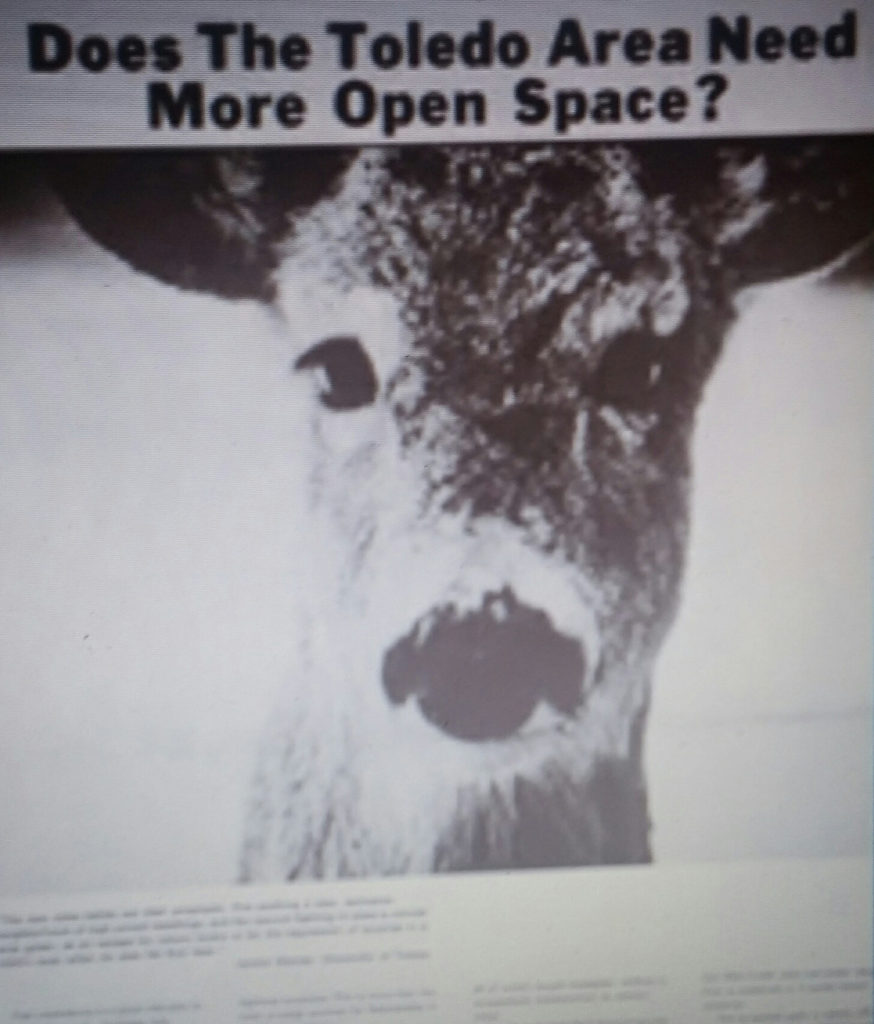 He placed the deer in the back of his station wagon, then called the media to meet him on the future Wildwood site. With the media loaded up on site and their cameras cocked, Mewborn released the deer on the property (probably illegal). The deer rallied from the blanket it was wrapped in, stood to attention, and by the script, turned to the cameras, posed just long enough to get the shot of the century — phoof! — the cameras went off at the precise moment when it mattered most. A perfect close-up shot of the deer’s adorable face, and just in time before the scared and elegant animal bounded over the nearest wood rail fence and leaped off into the prairie grass meadow beyond. The mug shot showed up in the Blade the next day, and the rest is history. There was an immediate shift in local public sentiment and attitude in favor of the park. The tide turned. And on November 6, 1974, by a narrow margin, the .5 million levy passed.
He placed the deer in the back of his station wagon, then called the media to meet him on the future Wildwood site. With the media loaded up on site and their cameras cocked, Mewborn released the deer on the property (probably illegal). The deer rallied from the blanket it was wrapped in, stood to attention, and by the script, turned to the cameras, posed just long enough to get the shot of the century — phoof! — the cameras went off at the precise moment when it mattered most. A perfect close-up shot of the deer’s adorable face, and just in time before the scared and elegant animal bounded over the nearest wood rail fence and leaped off into the prairie grass meadow beyond. The mug shot showed up in the Blade the next day, and the rest is history. There was an immediate shift in local public sentiment and attitude in favor of the park. The tide turned. And on November 6, 1974, by a narrow margin, the .5 million levy passed.
Today, the park is home to so many wonderful things…picnics, weddings, parties, people in pursuit of health, beautifully-preserved gardens, exquisite wildlife areas, all connected by well-planned walking paths that weave through the prairie grass, wild flower meadows and adjoining wooded areas. The path below the mansion along the Ottawa River is especially nice. Bird watchers from around the world come to Wildwood to see the hundreds of different species that also call Wildwood home. Deer are as comfortable on the property as their human friends.
 After all that, I hope Toledoans, who wisely continue to support the metroparks at the ballot box, understand how fortunate they are to, not only have all the gorgeous parks in the area, but to have Wildwood Preserve as its centerpiece, a park with a heart and soul…not just the heart and soul of the philanthropic family who brought it all to life, but the collective hearts and souls of the thousands who banded together to preserve it.
After all that, I hope Toledoans, who wisely continue to support the metroparks at the ballot box, understand how fortunate they are to, not only have all the gorgeous parks in the area, but to have Wildwood Preserve as its centerpiece, a park with a heart and soul…not just the heart and soul of the philanthropic family who brought it all to life, but the collective hearts and souls of the thousands who banded together to preserve it.
R.A. Stranahan died February 9, 1962 at the age of 75. His wife, Page, died May 11, 1968 at the age of 79. They are buried together, along with other Stranahan family members at historic Woodlawn Cemetery in Toledo.
Sources:
Wildwood Preserve Metropark
Wildwood: Land as Good as Gold at PBS.org
@DonRadebaugh
Please like my History Mystery Man fanpage on Facebook. Many thanks!

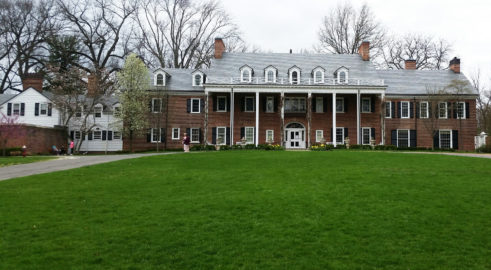
Does anyone remember Trudy Stranahan?
I do not remember Trudy Stranahan. What do you know about her? Thanks…HMM
well that’s my story , oh well. Thanks for bringing back some good memories . I had totally forgotten about the Stranahan Mansion and seeing where the water came into the house 45 years ago ! , I faded memory now . I spent most of that day eating and visiting with my cousins .
Thanks David…glad I could bring back some good memories!
I forgot in my last post to mention that at My Grandfathers Funeral reception I went back into the kitchen area and I saw the Water Canal coming into the house and I asked the Staff what it was. That was so long ago I remember how cool it felt in that part of the house. How unusual an Idea, I have never seen anything like it since then.
These are super interesting stories. Do you still live in the area? Thanks for chiming in…
When I was very little I remember visiting my Grandparents who were house-sitting at the Stranahans . I remember the huge Library that looked out to the water in the distance. The Stranahans gave my Grandparents a house as a gift a few years later in Perryville. When my Grandfather passed away in 1976 the reception after the funeral was at the Stranahan’s and I remember the domestic employees telling me about the waterway that came into the house. The Library I will always remember.
My mother Jessie Meetze used to watch the house during the winter while the Stranahans were in Fl. She worked at the Inverness during the summer. She told us they were the nicest people she had ever met
That’s awesome. I would have loved to have met your mother. Thanks for chiming in Wesly…HMM
As a child in the 1960’s I lived near what was said to be a former Stranahan home on Woodley Road. I suspect it preceded the Manor House but was itself a very large, white Georgian style home. It was at the present location of the St. George Orthodox Cathedral. Do I have this correct?
I’m not sure David; I’ll have to check into this. Thanks for chiming in…HMM
When I was 12 y/o (1962) we moved to a home just off Corey Road. During construction I recall walking down to the corner of Corey and Central where the Stranahans had a polo field and watching the competitors playing polo. That same year, I acquired a horse and boarded it at a stable (Forestview Downs) about a mile down the road. It was, in fact, adjacent to the schoolhouse which was eventually moved by the Metroparks. (As a 13-14 y/o I recall crawling through the back window of the abandoned and dilapidated schoolhouse with my girlfriend — it was a great “make-out” venue!)
The boarders at Forestview had free and unfettered access to the entire Stranahan estate for riding. In addition to the main trails which the Stranahan’s had made, we (mostly kids with horses) made miles of other single path horse trails which criss-crossed the estate. Many of those trails are walking trails today. The trails crossed the Ottawa River in several places. Often the “fords” became “swims” because the river changes depth dramatically in response to weather. One of the main trails we rode crossed directly across the lawn of the Manor House and down the paved driveway which led to the estate stables and riding arena.
At that time, the House was still inhabited but the other buildings were falling into disrepair. We were not supposed to go into the buildings but… kids being kids… we explored the stables, the arena, the ballroom, etc. I recall there still being show ribbons on the walls in the stables. In the arena there were several fancy coaches parked – some with life-sized horse statues harnessed to them. (The horse statue which currently stands in front of Carlo’s Cocina in Waterville is one of those horses.) On occasion we tied our horses in the woods and snuck up to the main house to look around. I recall being in the garden, the pool area (which was empty and lined with green slime) and the bathhouses.
They kept a small herd of sheep in the pastures between the Manor House and Central Avenue. Kids, horses, and sheep – what could possibly go wrong? We would jump the fence on our horses and then terrorize the sheep by chasing them around. And older (17 y/o) kid at the stable taught me the fundamentals of roping so soon – you guessed it – we were roping the Stranahans’ sheep. We got caught a couple of times but other than a stern reprimand, we never really got in trouble.
I saw that someone else mentioned sneaking in and stealing apples from the orchard. Oh, yes! Of course, horses, kids and apples are a natural and – after playing tag on horseback in the orchard – kids and horses would both eat their fill of apples and peaches!
I have always been eternally grateful to the Stranahans for the amazing opportunity they provided to a bunch of kids they never met or knew. Not many kids have the opportunity to grow up in a neighborhood yet have your horse right at hand. We, of course, all rode off of the estate as well. We trick-or-treated on horseback on Halloween. We rode to the drugstore at Talmadge and Central to by candy. We rode to Franklin Field (now Franklin Park Mall). Some of us even rode to school at McCord Junior High. Today, nearly 60 years later, many of those kids are still my friends – and many of us still have horses, as do our children and grandchildren.
These are fascinating stories Rich; and I appreciate you sharing them here. It’s so neat that you kept your childhood friends over the decades. What great memories! Thanks, HMM
I am one of the youngest members of the Blitzer family, ninety years old, who used live in Toledo, when I was a young child. My oldest brother, Sidney at the age of fourteen years, was an accomplished violinist and was concert master of a Youth orchestra, which I believe, was connected with one of the schools in the old city of Toledo.
He was very accomplished in those days during the depression, and even auditioned withYascha Heifitz ( I do not remember how his name is spelled), then, master violinist for and won a scholarship to the Curtis Institute, of Philadelphia .
At that time period, the Dowager Stranahan, of the AC Sparkplug Company, I was told by my parents, donated a violin to my brother, which he kept for many years, but finally sold it for about $40,000.00.
My Father worked for Champion Spark Plug on Upton Ave from 1956 to 1992 , he had a 6 year loayoff from 56 to62 But returned and stayed until the End of Champion in 1992, He had the choice to relocate to Burlington Iowa, But the timing and age was right so he retired at age 54. Champion and the UAW provided my Father and his wif An Excellant retiremant and Medical. My Father had Kidney Failure and never had to pay a nickel out of pocket for 13 years thanks to Champions and Mostly UAW’s Benefits. He passed in June of 2018. But the days of retiring at age 54 are long gone.
What a remarkable story. I was friends with a grandson of F.D. I believe it was who I got to know when my family vacationed next door to them at their winter apartment in Naples, Florida. My friend’s dad had married the boss’s daughter and he in time became the company president. They were the finest, most down-to-earth people you could ever wish to know and I have many fond memories of the times we spent together over the years in Naples, including some wonderful days spent fishing with my friend’s dad on the inland waterways around there and going home with more fish than we knew what to do with. I’ve learned something today that I had no idea about before, so thank you for telling the story. 🙂
You’re welcome Ian…thanks for taking the time to check it out.
How did it get the name Manor House?
Great article. Have taken the”Behind the Scenes Tour” to learn more about Stranleigh’s history. Also had the privilege to know Bob Metz when he served as Treasurer of the Glass City Chapter of the Buick Club of America. Very organized. Pleased to see the Metz building at Wildwood honors his role there.
Thanks Dave…appreciate you taking the time to check it out!
I went there once with Lynn Stranahan to swim. We rode horses together when we were about 10. I was amazed since we seemed equals at the stable. We had fun and acted like 10 year old girls act, silly and fearless. Thanks.
Very good story, My Dad and his parents at one time went to a party.My dad was small he told me that the gun range downstairs was a bowling alley. And my husband and I have done decorator days for Christmas just a wonderful time best park in Toledo
My good story, My Dad and his parents at one time went to a party.My dad was small he told me that the gun range downstairs was a bowling alley. And my husband and I have done decorator days for Christmas just a wonderful time best park in Toledo
I have a great story about the stranahan house as a kid growing up in temperance mi my next door neighbor was Art Webber he worked for or the parks system then he arrange the coolest tour for me on my birthday this was before they tore down the indoor riding stables and all and I also got to see all the like the servants quarters upstairs I remember an interesting story about the shooting range in the downstairs basement I guess at one time during a party and off duty police officer Toledo police officer pulled out of service revolver and shot up shooting range it was one of those trips I will never forget and every time that I’ve returned Wildwood sense that tore that install rubber range for me was always in my mind and one of the best memories I have as a kid from those thank you art
Makes me think of apples, used to sneak into the orchards on the estate and eat our fill,
Oh that’s very interesting. That would be a good story to tell all the way through. Thanks for sharing Curt. Appreciate you stopping by…
Curt Yeager, I remember those days and pass them on down to my grandchildren , most daring was to sneak the peaches up by the stables
Enjoyed all the detail in this article. I was one of many that canvased neighborhoods getting signatures on the petition in favor of the park. I was so proud & happy that it passed. A victory for all the people of Toledo & beyond for generations to come. Fondly remember hiking, kite flying & visiting the mansion all decked out for Christmas. Our former neighbor “Bud Stoeckley” worked closely with the park’s John Jaeger bringing endangered wild flowers into the park for preservation & beauty. Thank you, & may this gem continue to thrive.
Thanks for your nice comments Karen…they are much appreciated. Hope you’ll feel free to stop by anytime. And thanks for your hard work canvasing those neighborhoods!
Enjoyable and most interesting local history. I have always talked of Toledo Glass and Jeep but knew little about the Stranahans although I walked Wildwood for many years especially when my brother Jack was on the Metro Board.
Glad you took the time to read the piece Mark…much appreciated. Hope you’ll have a different perspective next time you wander through the park. Thanks!
Wonderful history of my neighborhood park while growing up.
Thank you so much…
My husbands uncle Walter Slaughterbeck was steanahans chauffeur. He would tell us about the pool house and all the swim suits that lined the walls. We would take our kids to Wildwood and tour the house. When Joe told the guides that his uncle worked for them in the house they allows us to walk through the house without a guide. Do they still have tours of the house.
Really?! The Stranahan’s chauffeur? That’s off-the-charts interesting. And yes, you can still tour the house with a guide, but not the way you were able to do it…on your own. How cool. Thanks for your comments!
Beverly, I am a grandson of Robert A. Stranahan, the son of his youngest child, Barbara. As a child I knew Walter. He was very friendly and enjoyable to be with at Stranleigh.
Thanks for sharing your story Harold. If you’re willing, I’d love to interview you sometime…thanks. HMM
Thanks to Champion Spark Plug I was able to raise my four children by myself and retire with a pension. They were a great company to work for.
Thank you for the history lesson on Wildwood Park. It was very interesting reading about a place that I have frequented for many years. I have ridden my bike there, roller bladed when I was younger, walked by myself and most recently walked my pups. I will look at the land with even a little more respect from now on !
Thanks Carole. I’m glad you’ll look at the park with a new perspective.
Wonderful story of a truly generous family. Thanks for letting us know them.
You’re very welcome Eileen…thanks for taking the time to read it!
I worked there for 30+ years I never work for such a fine family in my life I work for several other companies who is Willys Overland. Dana corporation or Spicer also Ohio art and Dura.
Imahillbilly
That’s so cool to hear that…how well they treated their employees. Most companies today could take some pages from the Stranahan’s playbook. Thanks Richard…
Our family just loves this park. We love the wooden board walk and always see wildlife when we take our grandson there. He loves the playground areas and we love to sit and watch the birds, squirrels and ducks thru the wild life window. I am so glad I got to read this story. My heart belongs to our parks.
Thanks Phyllis…I’m so glad your heart belongs with the parks. #WildwoodRocks
I am so glad I finally got to read this article. We had talked about it at Salem. You have outdone yourself again Don. Please keep up the good work!
Thanks John…sure appreciate it. Salem would make a great HistoryMysteryMan story!